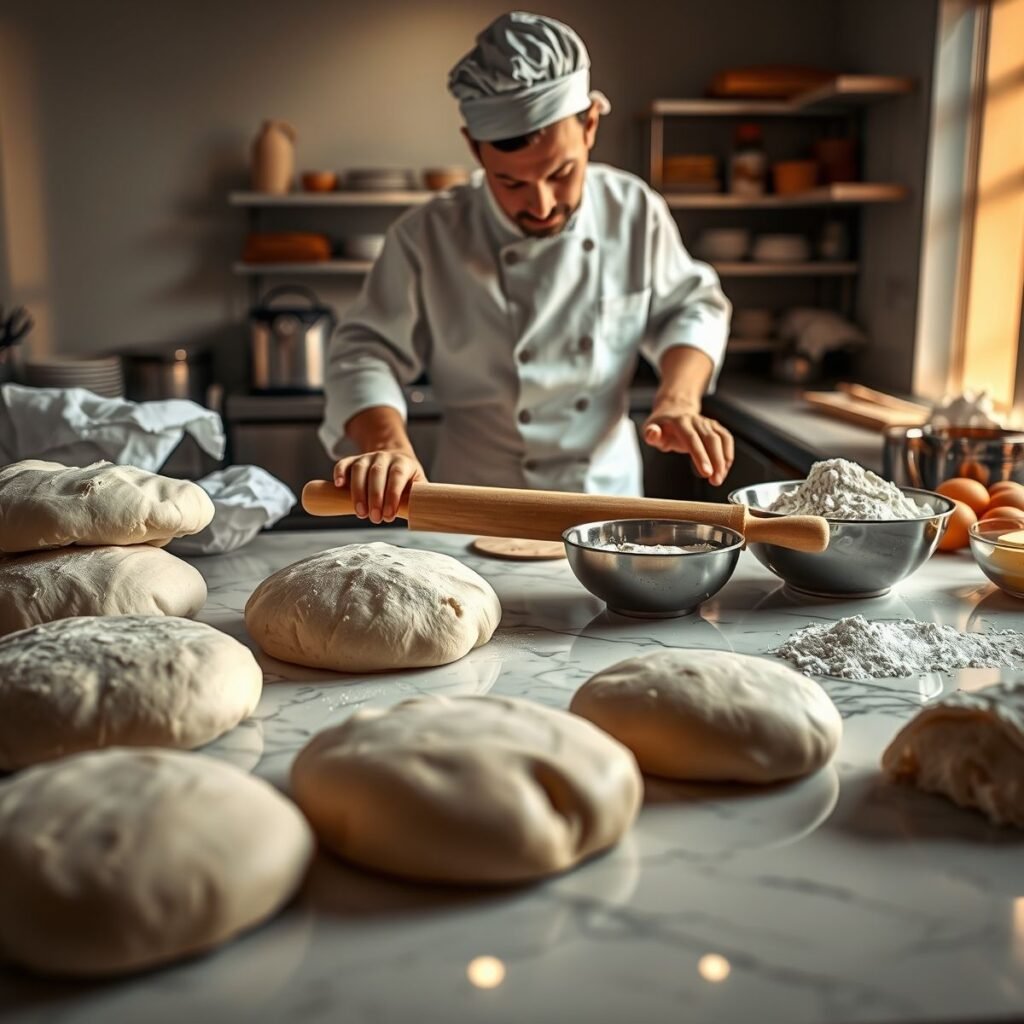Índice do Conteúdo
Understanding Dough Basics
Dough serves as the foundation for a variety of beloved recipes, from the classic pizza to delicate pastries. Understanding the fundamentals of dough is essential for any home cook or baking enthusiast. This section will delve into the various types of dough, their ingredients, and the methods used to prepare them, ensuring you have a comprehensive grasp of dough basics.
Types of Dough
There are several primary categories of dough, each with its unique characteristics and uses. The most common types include bread dough, pastry dough, cookie dough, and pizza dough. Each type varies in its flour content, fat, and liquid ratio, which ultimately influences the texture and flavor of the final product. Knowing these distinctions is crucial for achieving the desired outcome in your recipes.
Essential Ingredients
The basic ingredients for most doughs include flour, water, fat (such as butter or oil), and a leavening agent (like yeast or baking powder). The choice of flour can significantly affect the dough’s structure and flavor. For example, bread flour has a higher protein content, which helps develop gluten, while all-purpose flour is versatile for various recipes. Understanding these ingredients will empower you to make informed choices for your baking projects.
Measuring Ingredients Accurately
Accurate measurement of ingredients is critical when making dough, as even slight variations can lead to undesired results. Using kitchen scales for measuring flour and liquids ensures precision. Additionally, following the correct order of ingredient addition can impact the dough’s texture. For instance, mixing dry ingredients before incorporating wet ones promotes even distribution and better results.
Kneading Techniques
Kneading is a vital step in dough preparation, especially for bread and pizza dough. This process develops gluten, which gives the dough its elasticity and structure. There are various kneading techniques, including the traditional hand-kneading method and the use of stand mixers. Learning how to knead effectively and recognizing when the dough has reached the right consistency are crucial skills for any baker.
Resting and Rising
Allowing dough to rest is essential for gluten relaxation, while rising (proofing) is necessary for yeast-based doughs. During this time, the dough expands as yeast ferments and produces gas, creating air pockets that contribute to the final product’s texture. Understanding the importance of resting and rising will elevate your baking, ensuring your dough achieves the perfect consistency and flavor.
Shaping Techniques
Once your dough has risen, shaping it correctly is vital for achieving the desired final form, whether it be a loaf of bread, pizza crust, or pastry. Techniques vary by dough type; for instance, pizza dough should be stretched rather than rolled to preserve its airiness. Mastering these techniques will allow you to create visually appealing and delicious baked goods.
Baking Dough
Baking is the final step in transforming raw dough into delectable treats. The baking temperature and time can vary significantly depending on the type of dough and the recipe. Understanding how heat affects dough is essential; for example, a high temperature is ideal for pizza to achieve a crispy crust, while lower temperatures are better for delicate pastries. Learning how to recognize when your dough is perfectly baked will enhance your skills.
Common Dough Mistakes
Even experienced bakers can make mistakes when working with dough. Common issues include over-kneading, under-proofing, or incorrect ingredient ratios. Identifying and rectifying these mistakes is part of the learning process. Keeping notes on your baking experiences can help you refine your techniques and avoid repeating errors in future recipes.
Exploring Variations
Once you have mastered the basics of dough, feel free to experiment with variations. Adding different herbs, spices, or even incorporating whole grains can create unique flavors and textures. Understanding the foundational principles of dough will give you the confidence to innovate and personalize your recipes, making your baking journey even more enjoyable.



